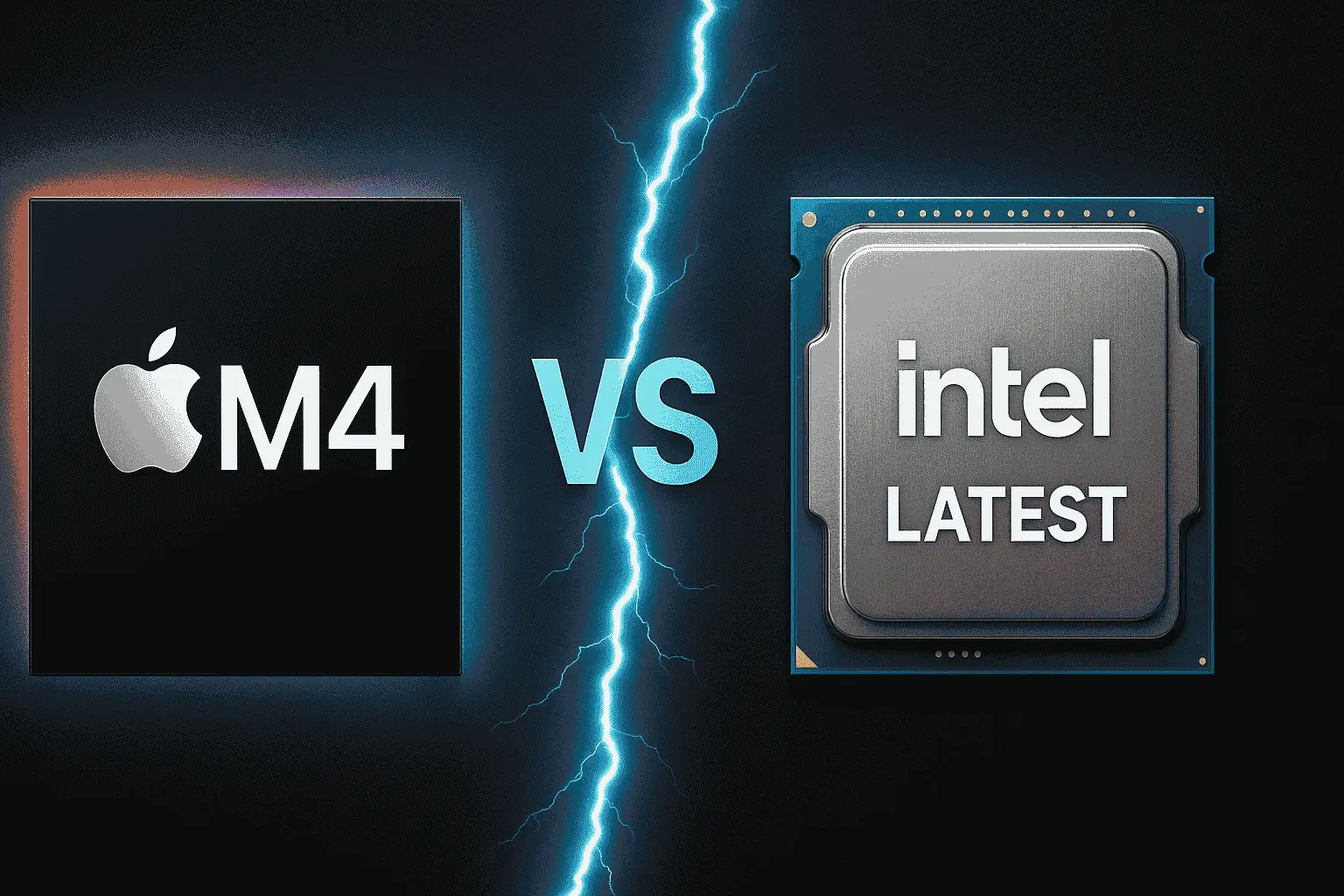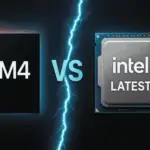In the ever-evolving battle between Apple and Intel, performance has always taken center stage. But in 2025, there’s a new metric turning heads—performance per watt. In a world that now prioritizes energy efficiency just as much as raw power, the release of Apple’s M4 chip and Intel’s latest Meteor Lake processors offers a fresh opportunity to ask: Who truly delivers more muscle per milliamp?
Spoiler: It’s not just about speed anymore—it’s about how much performance you get without draining your battery or heating up your device.
Apple M4 vs Intel Meteor Lake: A power efficiency showdown
Apple’s M4: The ARM-Based Powerhouse
With the M4, Apple continues its aggressive push away from Intel, refining the silicon that powers everything from iPads to Macs. Built on a second-generation 3nm process, the M4 is a marvel of miniaturization.
Key Advantages:
- Improved Neural Engine: 38 trillion operations per second (TOPS) – doubling the M3.
- 8–10 core architecture: Optimized for machine learning and creative workflows.
- Incredible efficiency: Delivers laptop-level performance while consuming phone-level power.
Thanks to Apple’s vertical integration (hardware + software synergy), the M4 gets more done per watt than nearly any chip in its class. Apps like Final Cut Pro and Logic Pro run smoother with less power draw. Even under sustained workloads, it stays cool and quiet.

Intel’s Latest: Meteor Lake Rises
Intel’s latest Meteor Lake chips are a huge leap forward for the x86 architecture. Built on Intel 4 (7nm-class process) and packed with Performance (P) cores, Efficient (E) cores, and a modular tile design, they’re engineered to balance speed and efficiency.
What’s New:
- Dedicated AI accelerator (NPU) for on-device intelligence
- Foveros packaging: Modular chiplets for better scalability
- Integrated Arc GPU: Discrete-level graphics inside
Intel has finally matched Apple’s energy-conscious mindset. Meteor Lake laptops boast impressive battery life gains—up to 15–20% better than last-gen Intel machines—but still can’t quite touch Apple’s numbers in certain workloads.
Performance Per Watt: The Metric That Matters
This term—performance per watt—simply refers to how much usable power a chip gives you for every unit of energy it consumes. It’s a holy grail for mobile computing, where heat and battery are constant tradeoffs.
Let’s break down the real-world implications:
| Task | Apple M4 (Performance/Watt) | Intel Meteor Lake (Performance/Watt) |
|---|---|---|
| Web Browsing | ★★★★★ | ★★★★☆ |
| Video Editing | ★★★★☆ | ★★★☆☆ |
| Gaming | ★★★☆☆ | ★★★★☆ |
| AI/ML Tasks | ★★★★★ | ★★★★☆ |
| Battery Endurance | ★★★★★ | ★★★☆☆ |
Apple’s lead in sustained efficiency owes much to ARM’s reduced instruction set and macOS-level software tuning. Intel, however, still holds ground in burst performance and legacy app compatibility, especially on Windows.
Software Optimization: An Underrated Factor
It’s easy to focus on silicon, but software plays a huge role in maximizing performance per watt. Apple controls the entire ecosystem—macOS, apps, firmware—enabling power-saving techniques like memory compression, app nap, and task prioritization.
Intel, by contrast, depends heavily on OEMs and Windows to optimize performance. That introduces variability: one Meteor Lake laptop might outperform another purely due to thermal limits or software bloat.
So, Who Wins?
If your priority is all-day battery, whisper-quiet thermals, and excellent performance per watt, Apple’s M4 is the clear winner—especially in creative, AI, and general productivity tasks.
But if you’re tied to Windows, run legacy x86 software, or need burst performance (like high-FPS gaming), Intel’s Meteor Lake is finally competitive and closing the efficiency gap fast.
- 🏆 Verdict:
- Best Efficiency: Apple M4
- Best Flexibility: Intel Meteor Lake
- Most Balanced Chip of 2025: Depends on your workflow
Final Thoughts
The performance race is no longer a sprint—it’s a marathon for energy, sustainability, and seamless experience. Whether you lean toward Apple’s curated perfection or Intel’s flexible firepower, 2025 is a fantastic time to upgrade your machine.
Just remember: speed matters, but endurance wins the game.







Leave a Reply